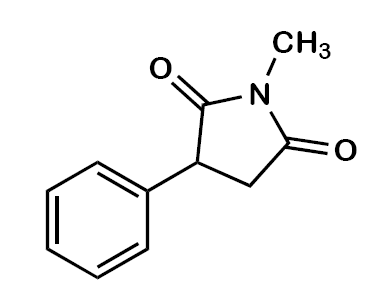-
Posts
125 -
Joined
-
Last visited
Content Type
Profiles
Forums
Events
Everything posted by blazinfury
-
I was curious if an amine or amide was basic enough to open up an epoxide. I think it can, plus I found this article, but am not sure if am understanding it correctly. Thanks. http://www3.interscience.wiley.com/journal/117906840/abstract?CRETRY=1&SRETRY=0
-
I need to synthesize, Phensuximide. The molecule is attached below. I need to begin with a benzaldehyde. Any advice? Thanks.
-
I agree but I believe that the quest is saying A is one unit and B is another. So I said lets say A=meters and B=seconds. The first 3 make sense but not the last two.
-
I tried 123 and I was wrong.
-
Suppose two quantities, A and B, have diff dimentions. Determine which of the following arithmetic operations could be physically meaningful (select all that apply). 1. AB 2. A/B 3. B-B 4. A-B 5. A+B I have tried choices 123 and 13, yet both were wrong. I know that 4 and 5 are wrong because you are subtracting different units. I thought that 2 was wrong because what if B=0, then it would be undefined. For 3, you are subtracting within the same unit, so it has to be correct. I am not sure at this point. Any advice is welcome.
-
How would one do such a Diels Alder rxn synthesis starting with 4 carbons or less to achieve the attached molecule as your end product? In these types of problems, where does one typically start (how do you where to put the double bond(s))? Thanks so much.
-
A woman measures the angle of elevation of a mountaintop as 12.0°. After walking 0.80 km closer to the mountain on level ground, she finds the angle to be 14.0° (a) Draw a picture of the problem, neglecting the height of the woman's eyes above the ground. Hint: Use two triangles. (Do this on paper. Your instructor may ask you to turn in this work.) (b) Select variable names for the mountain height (suggestion: y) and the woman's original distance from the mountain (suggestion: x) and label the picture. (Do this on paper. Your instructor may ask you to turn in this work.) © Using the labeled picture and the tangent function, write two trigonometric equations relating the two selected variables. (Do this on paper. Your instructor may ask you to turn in this work.) (d) Find the height y of the mountain by first solving one equation for x and substituting the result into the other equation. I just have no clue.
-
A high fountain of water is located at the center of a circular pool as in the figure below. Not wishing to get his feet wet, a student walks around the pool and measures its circumference to be 25.0 m. Next, the student stands at the edge of the pool and uses a protractor to gauge the angle of elevation at the bottom of the fountain to be 55.0°. How high is the fountain? I did: 2(pi)r=25 r=39.27 m y=39.27sin(55)=32.17 m However i was wrong. Any advice.
-
I'll say it again: UC you are a genius and a lifesaver. Thanks a lot man. The rest is cake. But lets say that I had a similar problem but I began with a methyl benzene to get a prop-2-ene benzene (sorry if I named it incorrectly). If I used NBS on methyl benzene, would the methyl become CH2Br? Thanks again.
-
I totally agree with you hermanntrude, but the issue is that this problem specifically states that I begin with a a cyclohexanone and get a 2-methylcyclohexa-1,3-diene.
-
I know that when dealing with benzenes there are directing groups for ortho and para positions. Now lets say that you begin with a cyclohexanone and you want to make a 2-methylcyclohexa-1,3-diene. My idea is that you can put the methyl there by reacting the initial molecule with an CH3-Li, but my issue is how to get the alkene on the 3rd and 4th carbons. I was thinking of adding either a Br or an OH and then using tert-butoxide to eliminate, but I am not sure how to get a Br there to perform such a feat. I was thinking of using NBS, but if I add NBS after the metyl is on there, the Br would probably go on the methyl substituent. Sorry for my pestering but I was just curious of how to effectively such a synthesis. Thanks so much.
-
Thanks so much for clarifying that.
-
Yes a cyclohexanol and any other compound or compounds containing 4 Carbons or less. Merged post follows: Consecutive posts mergedDude you are awesomely awesome. Thank you. Thank you. Just a quick side-quest. I just want to clarify something, if lets say you have a diol hydrocarbon chain right and you react it with PBr3, all of the OH's will become Br's right? If you have a diol hydrocarbon chain and you react it with TMSCl, would both of the OHs become OTMS or just one. I am personally curious about this because such an issue comes up frequently for me in synthesis and I wanted to clarify these two point. Thanks once again.
-
I am sorry to be a pain, but I was doing some practice synthesis and stumbled upon a 1,3 diene synthesis. I am not sure of how to approach this sort of problem and my textbook did not have any practice problems on this topic at all. The problem is attached below with my approach of doing it. You had to start with a cyclohexanol with 4 carbons or less. I am not sure if my way is effective, because I got stuck at my last step. Any advice would be appreciated. Thanks so much. synth.pdf
-
Thanks so much. I greatly appreciate your response. Although I do not know the mechanisms of all of the reagents that you told me about at this point, it sets a precedent in my mind to be more vigilant in future synthesis to ensure that I only get 1 desired product in greater yield. Thanks so much once again. I greatly appreciate your help in steering me in the right direction.
-
Either way I re-did it. Hope it is more or less correct. Sorry to takeup your time. Thanks so much. synth.pdf
-
Although your synthesis is freakin awesome. I was wondering if for my last step, I could have done this: 1. Br2/H2O 2.TMSCl 3. NaOH 4. BH3 H2O2/OH- 5. NaH 6. HF 7. PBr3 Although this may look improbable due to its length, would it still accomplish the task of attaining the designated product? For step 1 with the acetylene, if I wrote 1 mol, wouldn't NaNH2 then only deprotonate 1 side? For step 3, wouldn't one of the -OEt's just leave since it is a good leaving group when attached to a C=O? I am sorry for these errors, but I just finished orgo 1, which is probably why some of my mechanisms are ineffective even though based on our understanding we were told they were ok. Sorry.
-
Well I did it, but I'm not sure if its correct. CHeck it out. Thanks a lot. pic.pdf
-
What do you use to draw them-- the ACDC Labs orgo drawing program? At my school, we use a similar thing except its an online java enabled one: http://www.ic.sunysb.edu/Class/orgchem/marvin/examples/applets/sketch.html Thanks for the help. I greatly appreciate it.
-
Thank you so much UC for providing further insight. I understood what ecoli was saying and had your drawing in my head after I read it, but thanks for further explaining it and reinforcing this topic. I greatly appreciate it. Also sorry for not giving this topic a more specific name but I just was unsure of what this type of reaction is. Would you have any good links to understanding tautomerization reactions and their uses?
-
I have a question about the synthesis of cyclic esters. Is there a set strategy of approaching these types of synthesis reactions. For instance, in the attached synthesis, I was told to open the bromonium ion in the last step. After looking at it, the only feasible way of doing it would be for the precursor retrosynthetic step to be a Br2/H2O, followed by the OH attacking the C=O. Is that the correct approach of doing such a problem? Thanks and sorry to be a bother.
-
Yea. Thanks ecoli. Merged post follows: Consecutive posts mergedThis makes so much sense now. You are freakin awesome. I would have never thought of that.
-
Sorry to bother you guys, but I have a multiple choice organic question that I was hoping you guys could help me with this attached problem. I understand that the first step will turn the OTMS into an OH, but I am not sure what role the H+ will play in this rxn mechanism. Thanks.




